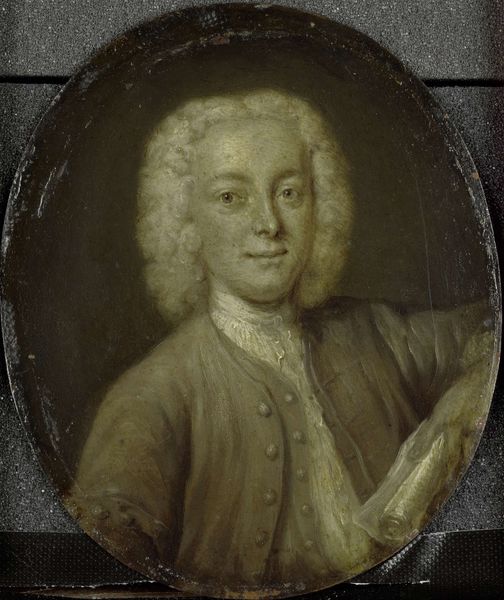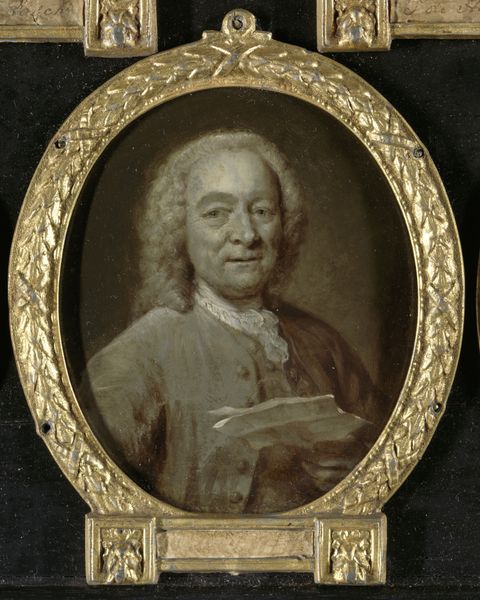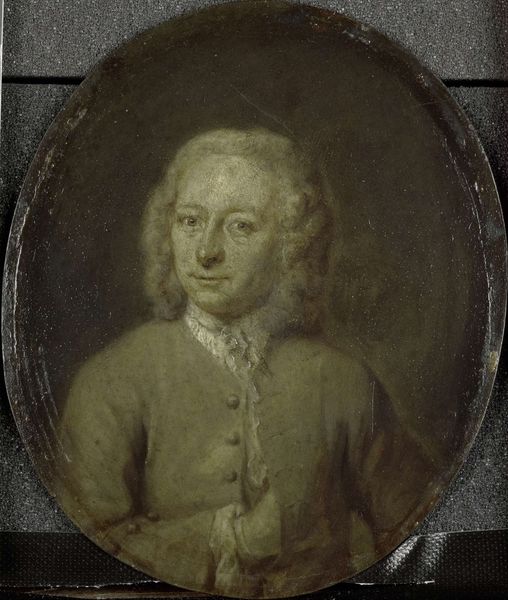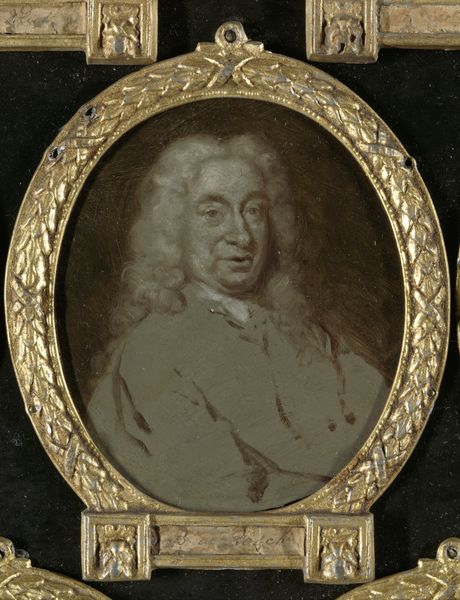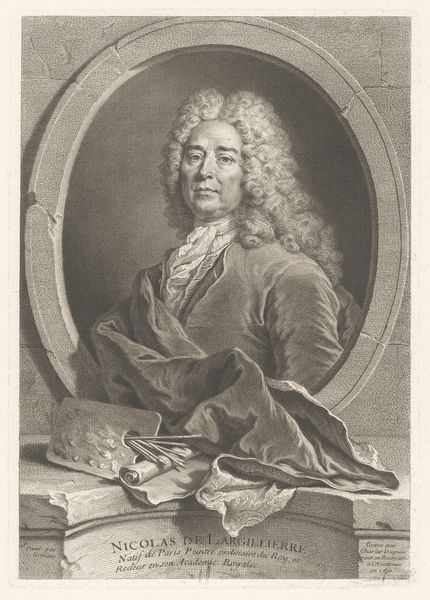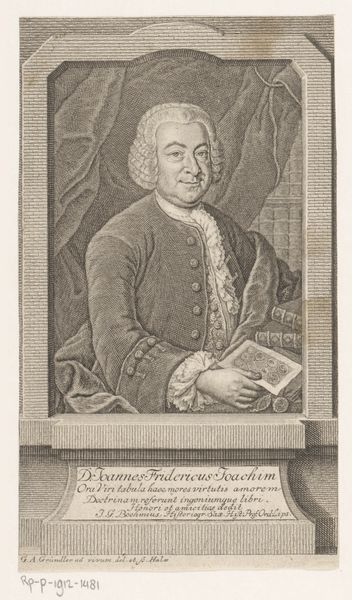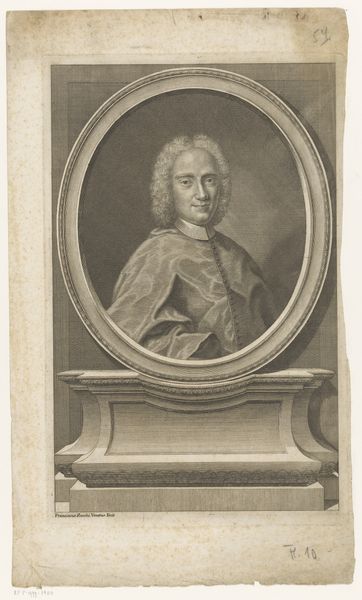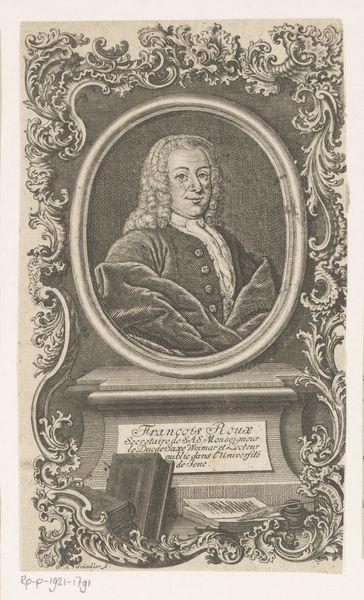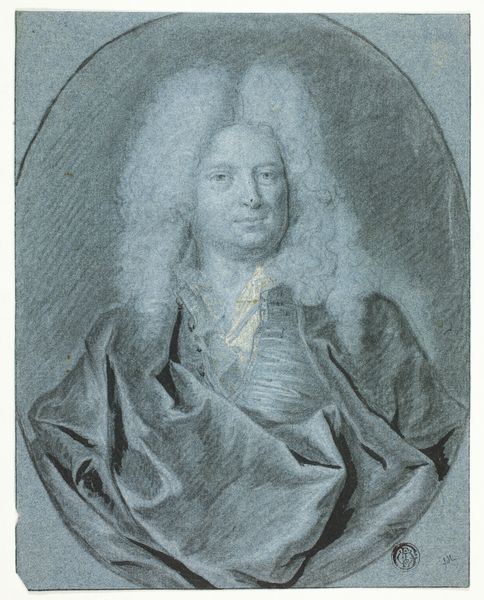
Portrait of Bernardus de Bosch I, Poet and Art Patron in Amsterdam 1732 - 1771
0:00
0:00
painting, oil-paint
#
portrait
#
baroque
#
painting
#
oil-paint
#
charcoal drawing
#
figuration
#
charcoal art
#
portrait reference
#
portrait head and shoulder
#
genre-painting
#
charcoal
Dimensions: height 11 cm, width 9.5 cm
Copyright: Rijks Museum: Open Domain
Curator: Let's examine this oval portrait by Jan Maurits Quinkhard. It is a depiction in oil paint of Bernardus de Bosch I, an 18th-century poet and art patron from Amsterdam. Quinkhard produced it sometime between 1732 and 1771. Editor: There’s a striking modesty to the colour palette. Restrained tones give it a certain intimacy despite its slightly grand Baroque flair, no? Curator: Indeed. The artist's choice of oil paint and his manipulation of light allow him to demonstrate texture—the softness of the sitter’s hair and the precise detailing in the costume, all indicating a patron who valued quality craftsmanship and likely invested considerably in supporting such labor. Editor: Note also the direction of his gaze and that slight, almost secretive smile playing at the corners of his lips. Those elements draw us into the man’s inner world, his psychological space rendered beautifully through line and tone. The holding of the papers creates a point to draw your eye in! Curator: We see not just a face, but an individual whose patronage had tangible benefits for Quinkhard, shaping his artistic trajectory. Consider, too, the commodification of artistry embedded within the patronage system itself; these transactions underpinned much of the Baroque aesthetic. Editor: I appreciate how Quinkhard frames De Bosch within this oval. The artist emphasizes certain virtues—intellect, perhaps, and a sensitivity reflected in those softened edges. Compositionally, it directs our focus to those qualities. Curator: These commissions helped support workshops and craftspeople, affecting what materials were accessible and affordable, dictating art production as a business. It is no doubt this transaction, along with similar portraits commissioned by other wealthy merchants, contributed to a particular fashion and economy around artistic likeness. Editor: Perhaps a beautiful illustration of status then - but undeniably well structured. I will remember those aesthetic and tonal choices long after this visit! Curator: Precisely. We can read how wealth and artistic expression intersected to make it to the wall. It's really fascinating to ponder this in today's art market too.
Comments
No comments
Be the first to comment and join the conversation on the ultimate creative platform.

